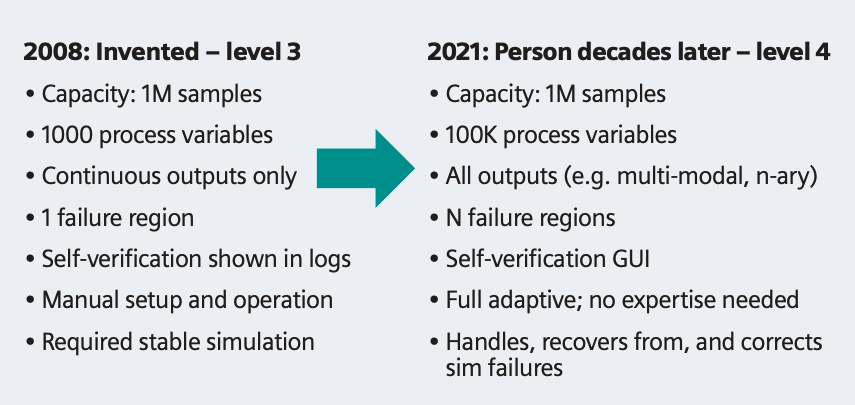Benchmarking the maturity of AI in EDA
How can we define the current state-of-the-art for the deployment of artificial intelligence within EDA tools? The Solido group within Siemens EDA has been working with AI algorithms for a comparatively long time within the sector. In a new technical article, the company sets out a number of benchmarks that it has used to reach a “production-grade” standard for its Design Environment and Characterization Suite tools.
Solido groups its work, focused on bringing increasing efficiency to SPICE-level verification, around a number of objectives and levels of technological sophistication.
The five overarching objectives are:
- Verifiability: Can you tell if the AI model is right?
- Accuracy: How close are the answers compared to the golden reference?
- Generality: Does the AI approach work on everything?
- Robustness: Can I bet my next design schedule on it?
- Usability: Does it “just work” for my team?
In the context of these goals, there are then currently five levels of maturity, ranging from a ‘no AI’ level 0. In terms of a practical application of AI beyond simple tool research, the third and fourth of these levels are the most important for users.
Level 3: “Adaptive, accuracy-aware AI. Tools at this level can identify when AI models are not delivering sufficiently accurate results and can continue adaptively collecting data and improving models automatically until accuracy criteria are met.”
Level 4: “Full production AI that “just works.” Solutions at this level have extended level 3 adaptive technology so that it identifies and supports all corner cases and delivers correct results in every case, every time.”
Figure 1 shows a progression from a Level 3 to a Level 4 tool using the example of high-sigma verification. Of particular note is the time taken by Solido to achieve the transition, emphasizing, as the paper notes, the decades of person-hours of research required.

FIgure 1. Solido high-sigma verification technology has gone through person-decades of refinement (Siemens EDA)
Another way of looking at this process is to see it as a progression through recognized AI techiques. Things begin with tools that leverage Adaptive AI as noted at level 3 and then supplement that with Additive AI (retaining and knowing when to reuse models from earlier to reduce runtimes) and later Assistive AI (“leveraging generative AI to enable the tool to assist human users to identify and implement design optimization choices).
The paper goes on to describe how these objectives are realized specifically within the Solido tool family. How Siemens EDA’s Solido achieved production-grade AI in EDA applications is available for download here.


